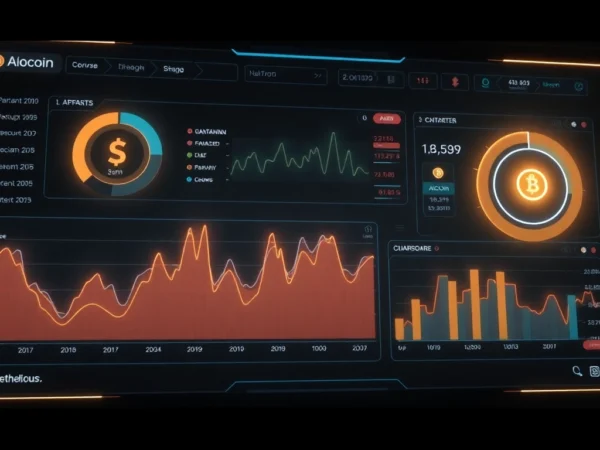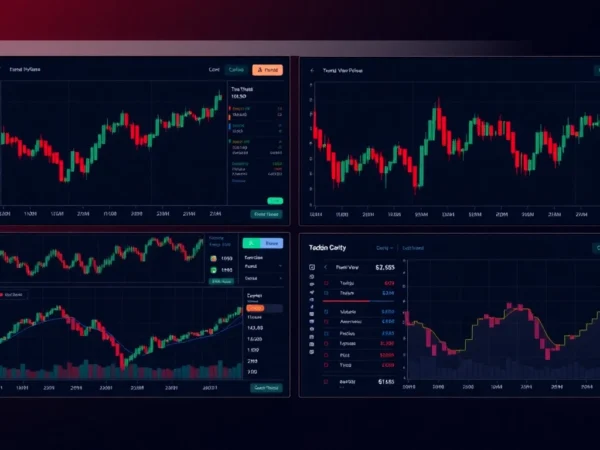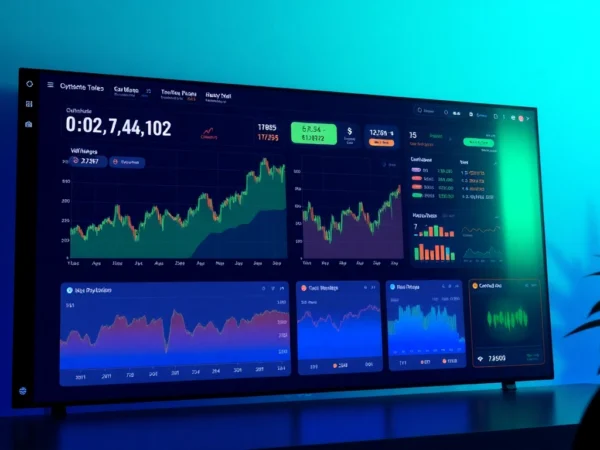How Binance’s Resumption of Cryptocurrency Futures Trading Signals Market Confidence or Risks
Understanding the Recent Binance Futures Trading Resumption
Overview of Binance’s Trading Outage and Recovery Timeline
In the volatile world of cryptocurrency trading, exchange outages are not uncommon but can significantly impact market sentiment and trader confidence. Recently, Binance, the world’s largest crypto exchange by trading volume, experienced a notable disruption in its futures trading platform. The outage lasted several hours, during which traders were unable to execute new positions or close existing ones, causing uncertainty and concern across the market. This period was marked by intense speculation about the cause—ranging from technical glitches to potential security breaches.
Following a comprehensive investigation, Binance announced the restoration of futures trading, citing a software glitch that was promptly addressed without any apparent security breach or malicious attack. The timeline from outage to full recovery was closely scrutinized, revealing a streamlined response oriented towards maintaining user trust and market stability. The quick resolution indicates Binance’s robust infrastructure and commitment to high-availability systems, but it also reignited debates about the resilience of crypto exchanges amid increasing trading volumes and complex infrastructure.
原因分析:技术 glitch or strategic move?
Understanding the root cause of such outages is crucial for traders and institutional investors alike. While some experts suggest that the outage was simply a technical glitch—a common occurrence in complex digital ecosystems—others speculate whether it was a strategic move by Binance to consolidate risk or perform updates unnoticed by the broader market.
Technical glitches often stem from software bugs, hardware failures, or network issues, especially during high trading volumes leading to system overloads. Binance’s engineering team reported that the outage resulted from a bug in their risk management system, which caused temporary halts in futures trading to prevent cascading failures. This explanation aligns with industry best practices: traders are better protected when exchanges implement precautionary halts during unexpected technical anomalies.
On the other hand, some market participants question whether the outage might have been orchestrated to allow Binance to conduct internal updates, perform risk management actions, or manage market manipulation concerns discreetly. While no concrete evidence supports this theory, the timing and communication of such outages are often scrutinized for potential strategic motives, especially in a market that values transparency.
Impact on Traders and Market Sentiment
Short-term, the outage caused volatility spikes and a temporary dip in Bitcoin and altcoin prices as traders rushed to reassess risk. Market sentiment, which is often fragile in the crypto space, experienced a transient dip driven by fears of platform instability. Many retail traders expressed frustration over not being able to manage open positions or execute trades during critical moments.
However, in the long term, Binance’s transparent handling and swift recovery bolstered market confidence, demonstrating resilience and operational robustness. The incident also served as a reminder for traders about the importance of risk management strategies, such as setting stop-loss orders and diversifying trading platforms. Institutional investors, meanwhile, viewed the event as a test of exchange stability—reassured by Binance’s response, they are likely to weigh such incidents carefully against other risk factors in their investment calculus.
Cryptocurrency Market Dynamics After the Outage
Short-term Market Volatility and Momentum Shifts
The immediate aftermath of Binance’s outage saw heightened market volatility. Bitcoin, Ethereum, and several altcoins registered sharp price swings within the hours following the platform’s stabilization. Such volatility is typical after outages because traders seek to reposition themselves, often leading to panic selling or opportunistic buying. Data from CoinMarketCap indicates that Bitcoin experienced a brief 3% decline, followed by a rapid recovery as confidence was restored.
Additionally, derivatives markets—particularly perpetual swaps—exhibited increased trading volumes, reflecting heightened risk appetite among speculators. Traders who had anticipated such disruptions used derivatives to hedge positions or speculate on short-term movements, exemplifying the complex interplay between spot and futures markets during crisis events.
Long-term Implications for Cryptocurrency Trading Strategies
While short-term reactions tend to be volatile, the long-term implications involve reassessment of risk management practices. Traders are increasingly emphasizing the importance of platform diversification, choosing exchanges with proven resilience or implementing backup plans for critical trades. Techniques like options hedging and the use of cold wallets for holding significant assets are gaining traction, as market participants seek to protect themselves from future outages or security breaches.
Furthermore, the incident underscores the need for advanced analytics and real-time alerts. Traders and institutions are investing in tools that monitor exchange health metrics, network security, and blockchain activity to stay ahead of potential disruptions. The resilience demonstrated by Binance also encourages more institutional participation, fostering a maturation of the overall market infrastructure.
How Institutional Investors Interpret Such Disruptions
Institutional investors evaluate outages like Binance’s not only through technical reliability but also via the broader lens of regulatory compliance and security. An outage caused by a mere glitch, promptly addressed, can be viewed as a positive sign of an exchange’s operational maturity. Conversely, repeated or prolonged outages may lead institutions to question if the exchange can serve as a stable foundation for large-scale asset management.
Moreover, regulators are increasingly scrutinizing crypto exchanges for their resilience standards. Binance’s quick recovery aligns with industry best practices, potentially easing regulatory pressures. As the market matures, institutions are deploying more comprehensive risk assessments that include exposure to technological failures, emphasizing diversification across multiple platforms and asset classes.
Assessing the Risks and Rewards of Futures Trading in Cryptocurrency
Common Challenges Faced by Cryptocurrency Traders
Futures trading in cryptocurrency offers high reward potential but comes with significant risks. Challenges include extreme volatility, leverage-related liquidation risks, and technical vulnerabilities of trading platforms. The Binance outage exemplifies how technological failures can precipitate cascading losses, particularly for traders relying heavily on margin positions. Additionally, market manipulation tactics like pump-and-dump schemes can distort prices, making informed decision-making difficult.
Strategies to Mitigate Risks During Volatile Periods
- Diversification: Spread trades across multiple exchanges and assets to reduce platform-specific risks.
- Use of Stop-Loss and Take-Profit Orders: Automate trade exits to limit potential losses and lock in profits, especially during rapid price swings.
- Real-Time Monitoring: Employ analytics tools that track exchange health and network activity, alerting traders to potential issues before they escalate.
- Limit Use of Leverage: Exercise caution with high leverage to prevent liquidation during volatile moves triggered by unforeseen outages.
During disruptions, patience and adherence to strict risk protocols often outperform reactive trading, enabling traders to navigate turbulence more safely.
Opportunities for Profit Amid Market Recovery
Market volatility creates both risks and opportunities. Post-outage, corrective price movements—such as oversold rebounds—can present buying opportunities for disciplined traders. Technical analysis tools like RSI and Fibonacci retracements help identify favorable entry points. For instance, rapid recoveries after initial dips often signal strong support levels, enabling traders to enter positions with a favorable risk-reward profile.
Moreover, deploying options strategies such as straddles or strangles can profit from heightened volatility without directional bias. Those who anticipate rapid rebounds post-outage may also capitalize on futures contracts to hedge or leverage their positions strategically.
Technological and Security Aspects of Cryptocurrency Exchanges
Importance of Security Measures in Futures Trading
Security in crypto futures trading is paramount due to the high leverage and irreversible transactions involved. Exchanges employ multi-layered security protocols, including cold storage, multi-signature wallets, encryption, and continuous monitoring for suspicious activity. Binance’s outage highlighted the importance of resilient systems and incident response plans to prevent data breaches or large-scale disruptions.
Furthermore, regulatory frameworks are increasingly mandating exchanges to adhere to operational security standards. Transparent disclosures about security measures enhance trader confidence and reduce the likelihood of loss due to fraud or hacking.
Blockchain Resilience and Exchange Reliability
Blockchain technology underpins the resilience of digital currency systems, providing decentralized consensus mechanisms that limit single points of failure. Nevertheless, centralized exchanges remain vulnerable to technical failures, cyberattacks, and operational mishaps. Binance’s experience underscores the need for continuous infrastructure upgrades, redundancy, and incident handling protocols.
Emerging innovations such as layer-2 scaling solutions, cross-chain interoperability, and decentralized exchanges (DEXs) aim to distribute risk and improve reliability, paving the way for a more resilient trading ecosystem.
Future Advancements in Crypto Trading Infrastructure
Looking ahead, technological advancements will further enhance security and reliability. Artificial intelligence-driven monitoring systems can predict and preempt outages, while blockchain interoperability can reduce systemic risks. Improvements in user authentication, real-time threat detection, and automation will also streamline trading operations, making platforms more robust against outages.
Additionally, the integration of decentralized finance (DeFi) solutions offers alternative trading avenues less susceptible to centralized failures, promising a more resilient future for cryptocurrency futures trading.
Guidance for Investors and Traders Moving Forward
Key Takeaways from Binance’s Outage and Comeback
The recent Binance incident underscores essential lessons: technological resilience is critical, diversification reduces dependency on single platforms, and transparent communication fosters trust. Rapid recovery demonstrates Binance’s operational maturity but also reminds traders to remain vigilant and prepared for unexpected disruptions.
Best Practices for Safe Cryptocurrency Futures Trading
- Maintain diversified trading channels and cold storage reserves.
- Use automated risk management tools like stop-loss orders.
- Stay informed through real-time platform health metrics and news updates.
- Apply disciplined leverage management and avoid overexposure during volatile periods.
- Regularly update security protocols, including two-factor authentication and hardware wallets.
Adopting these practices can mitigate risks associated with technological failures and market swings, ensuring a more secure trading experience.
How to Stay Informed and Adapt to Market Fluctuations
In a rapidly changing crypto landscape, continuous education is vital. Subscribe to authoritative news sources, participate in community discussions, and leverage analytics platforms that monitor market sentiment and exchange stability. Learning to interpret market signals—such as volume spikes, order book anomalies, or network status alerts—empowers traders to make informed decisions swiftly.
Moreover, developing adaptive trading strategies that incorporate flexible entry and exit points allows traders to capitalize on volatility while managing downside risks effectively.










